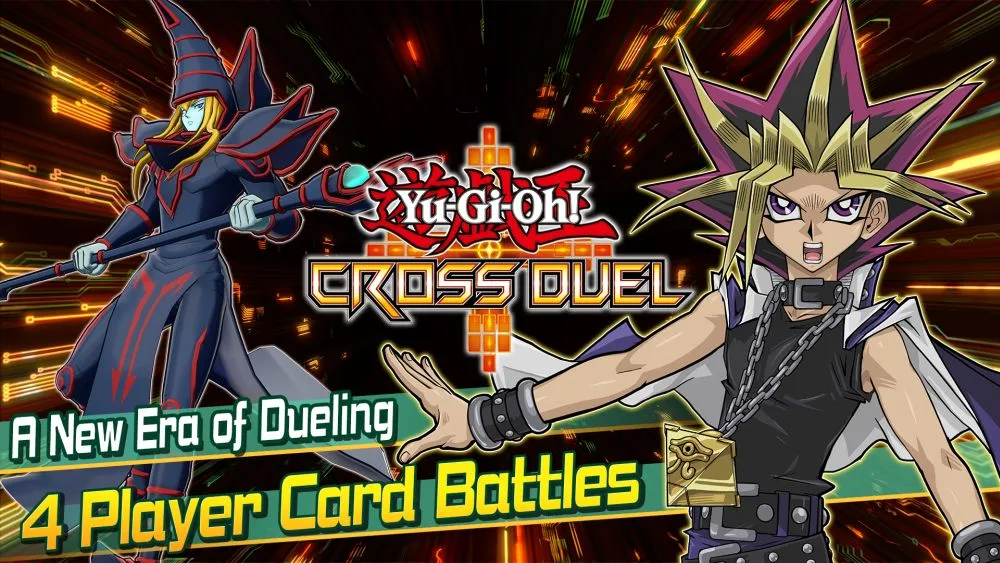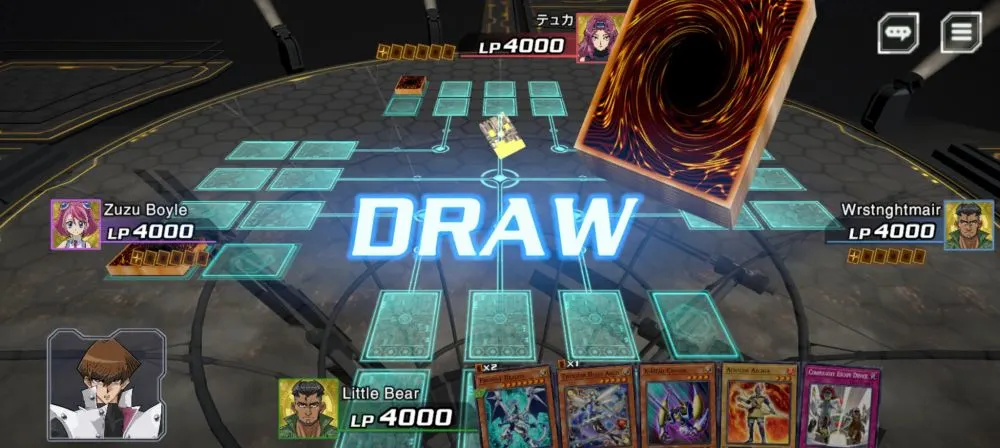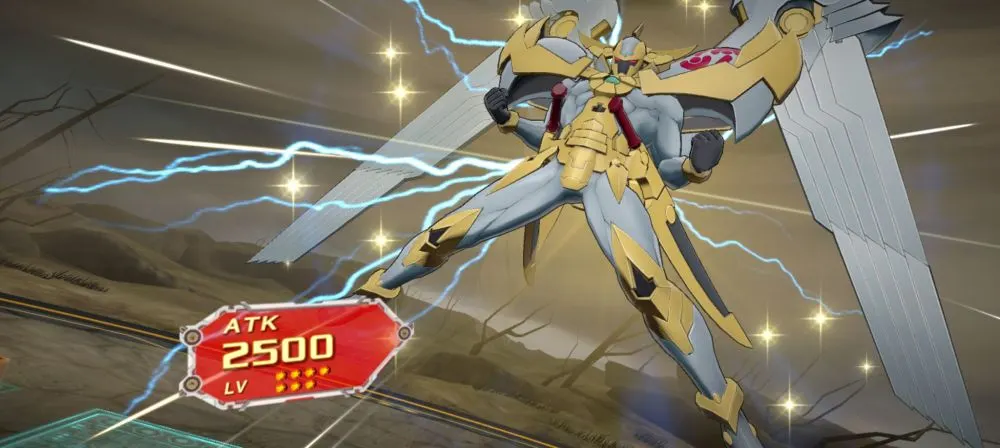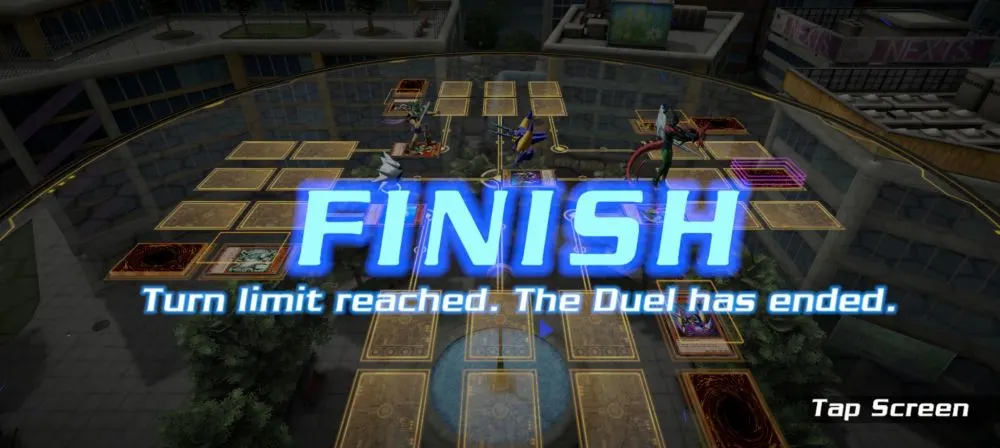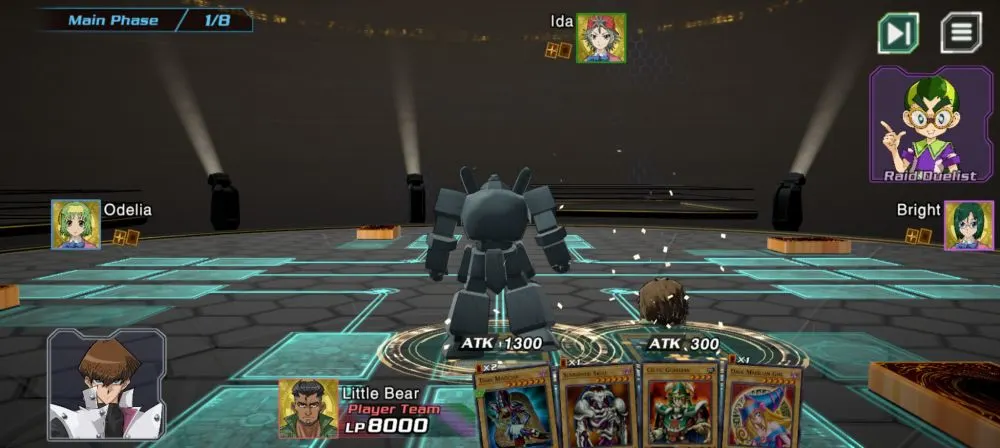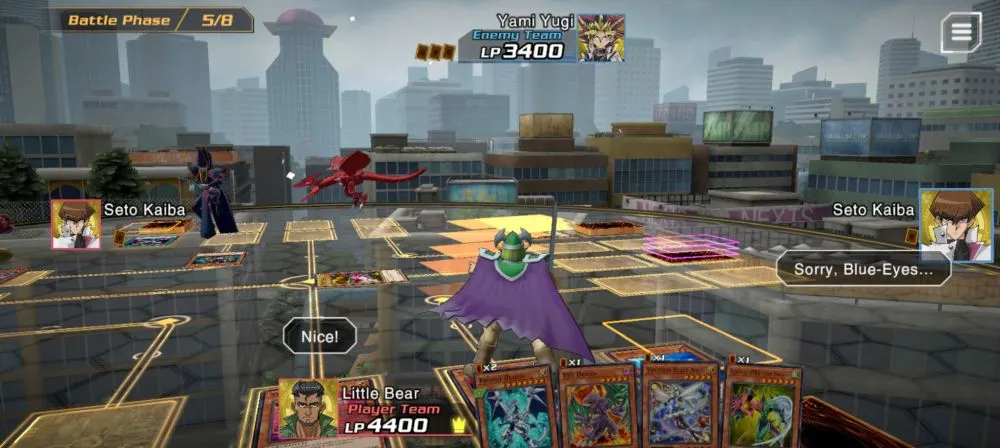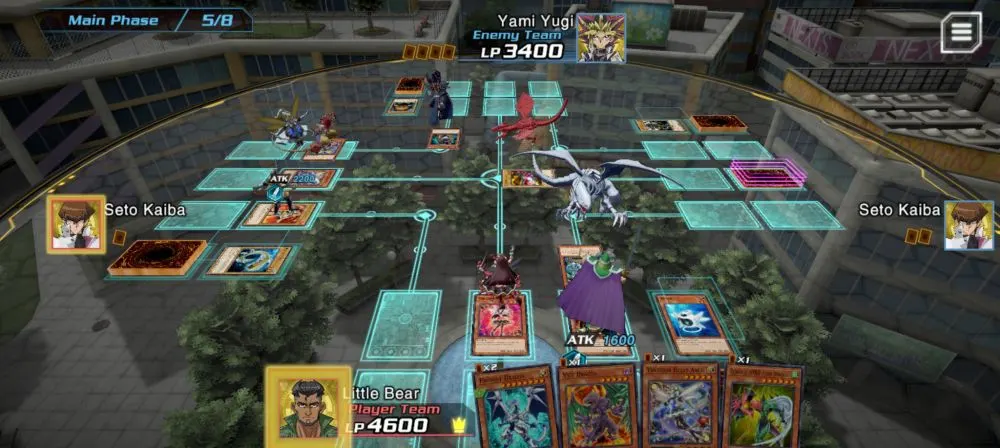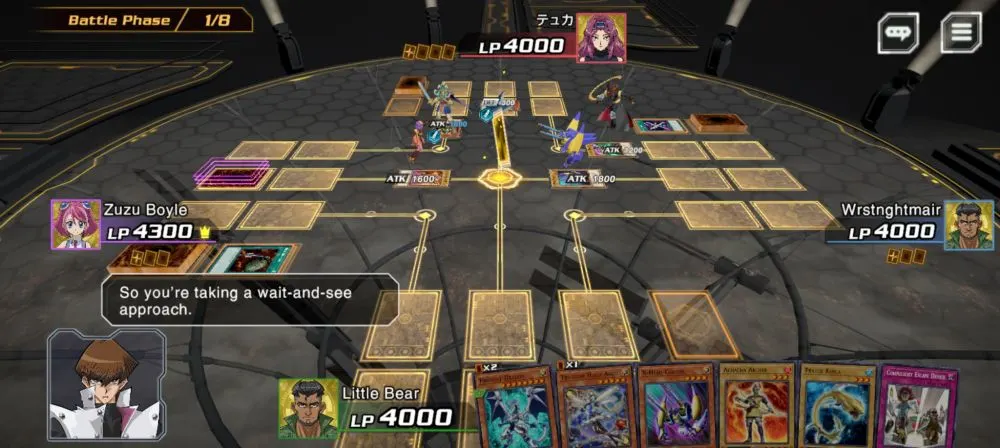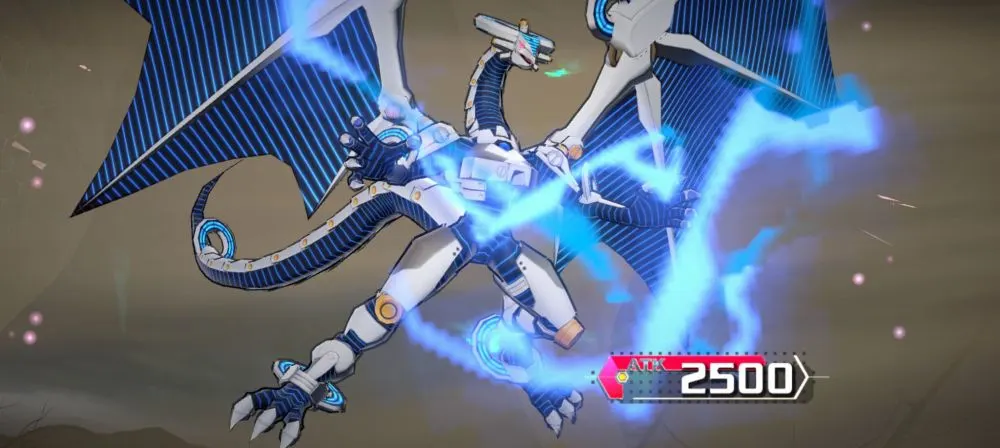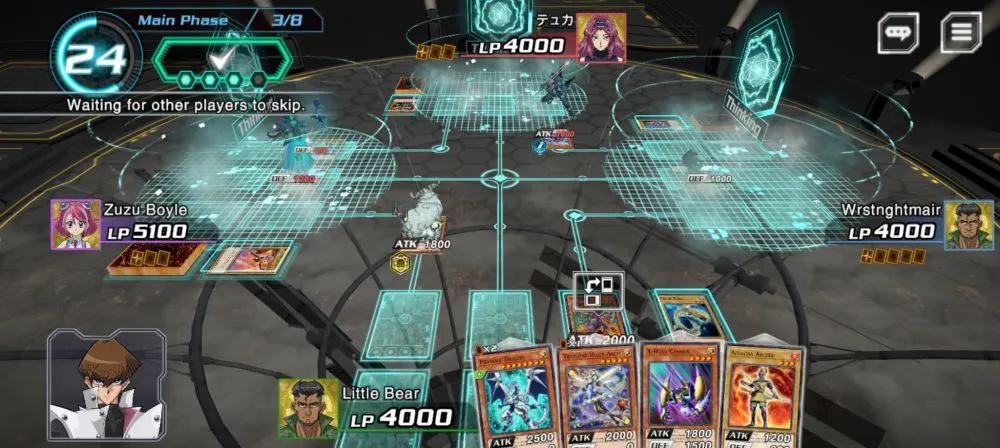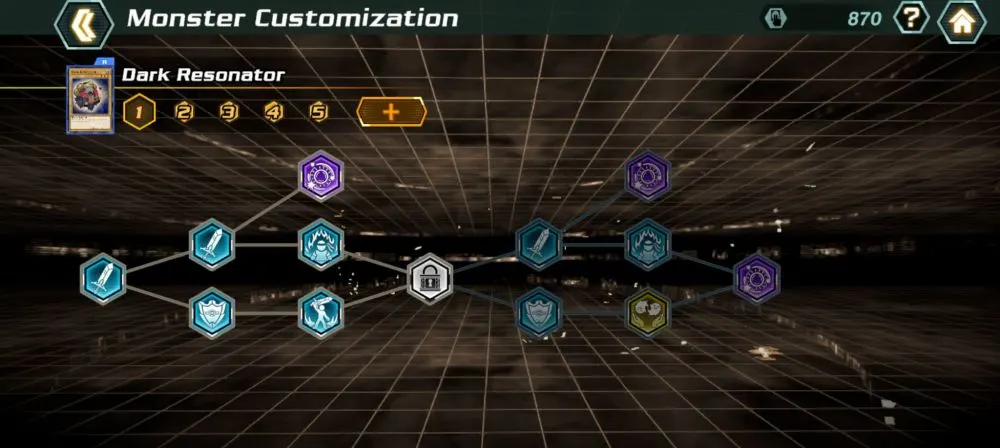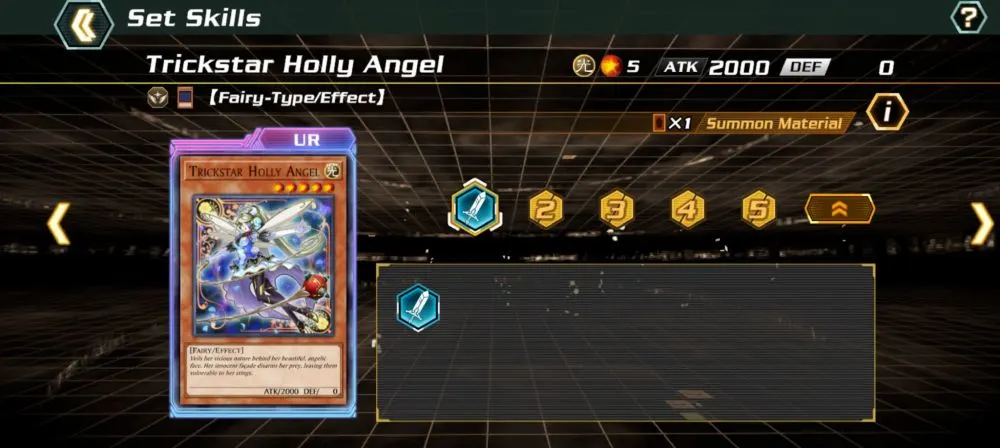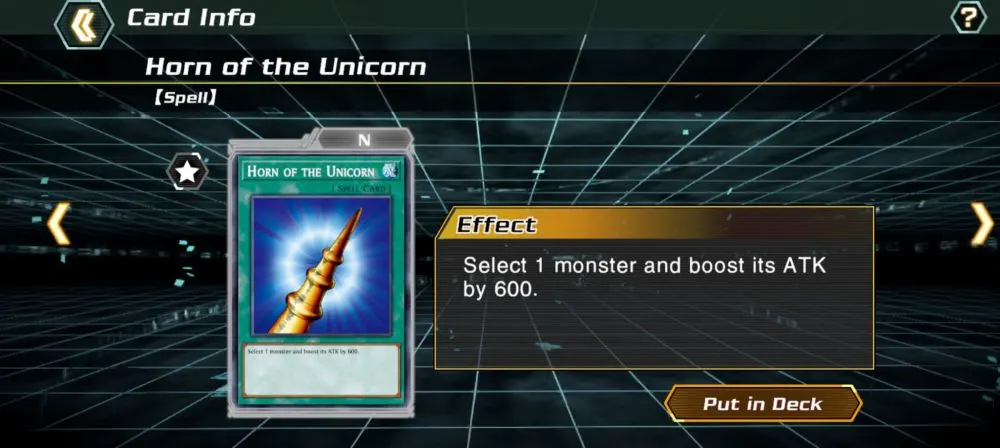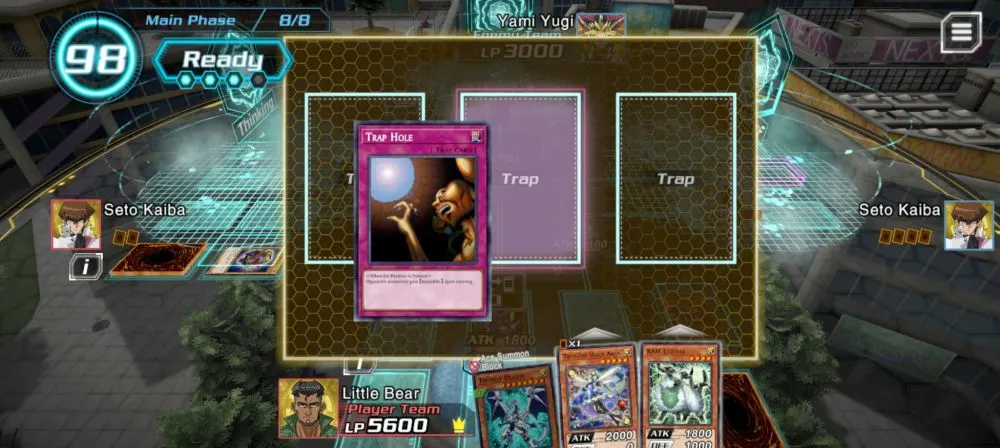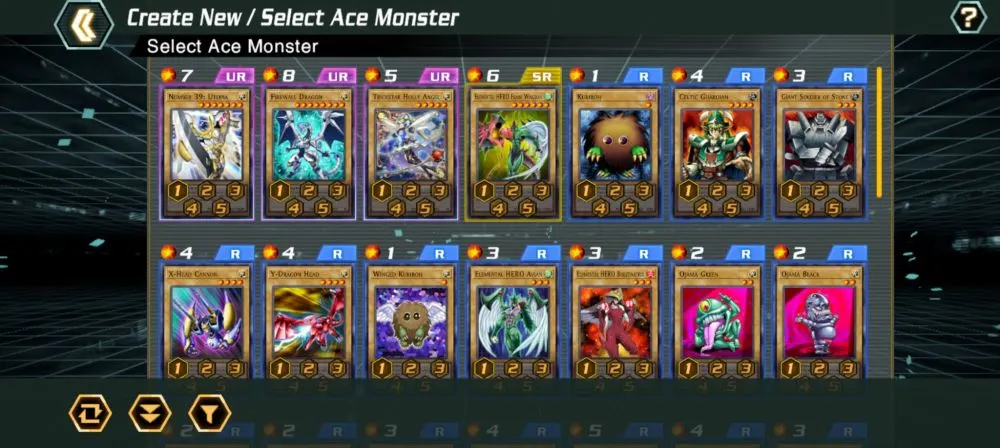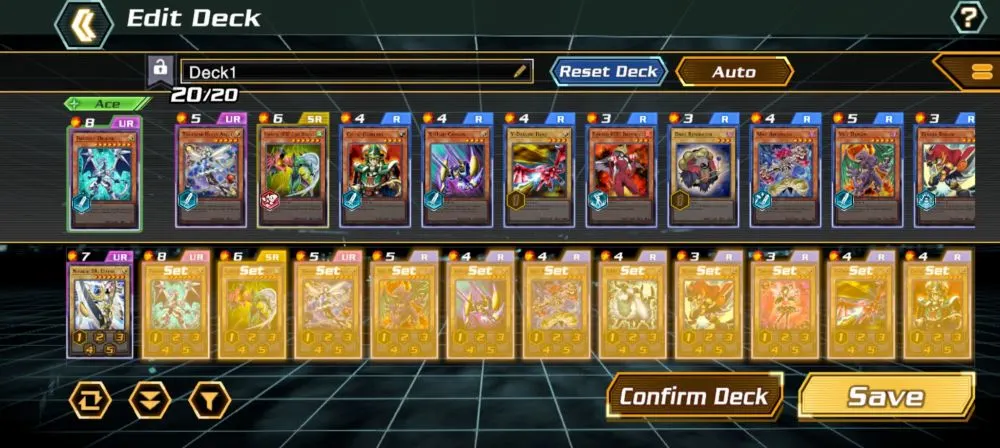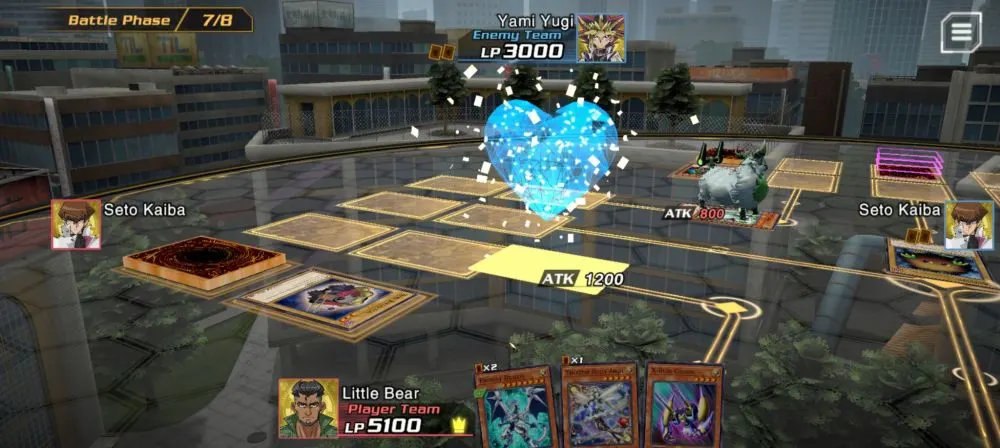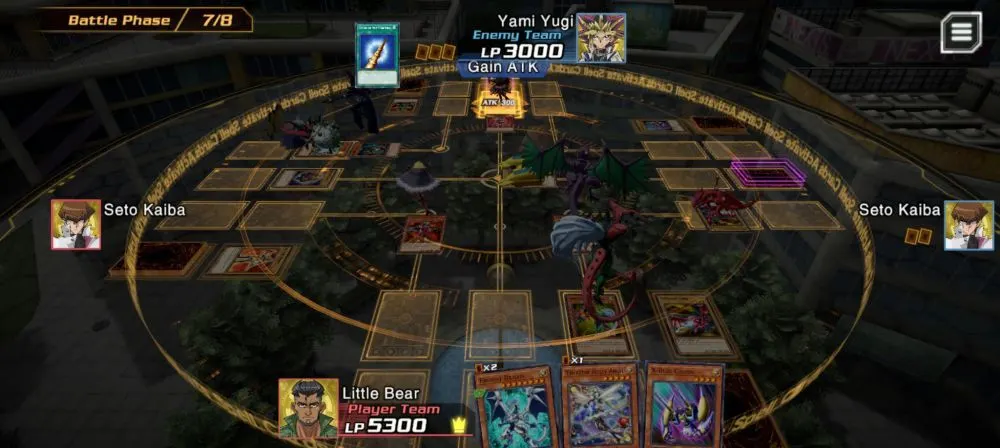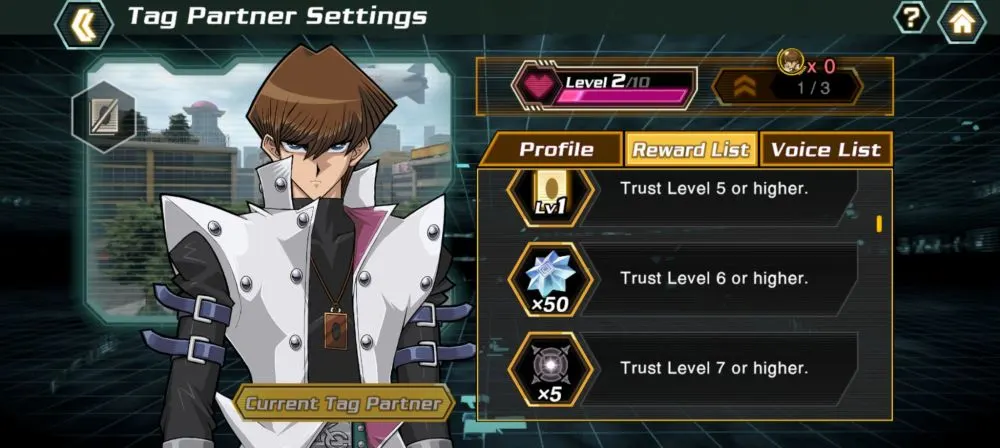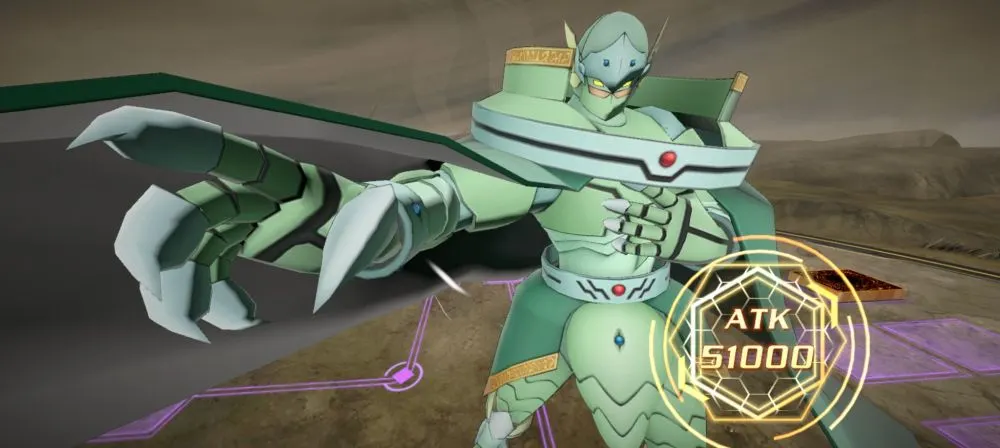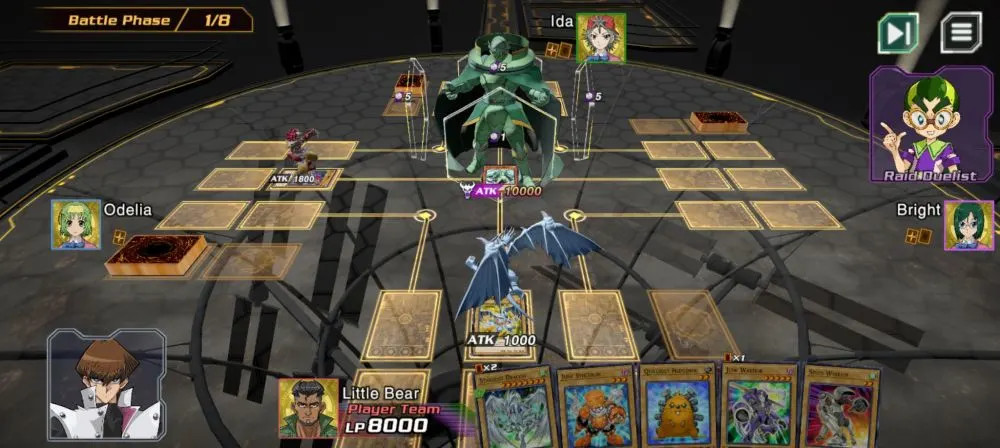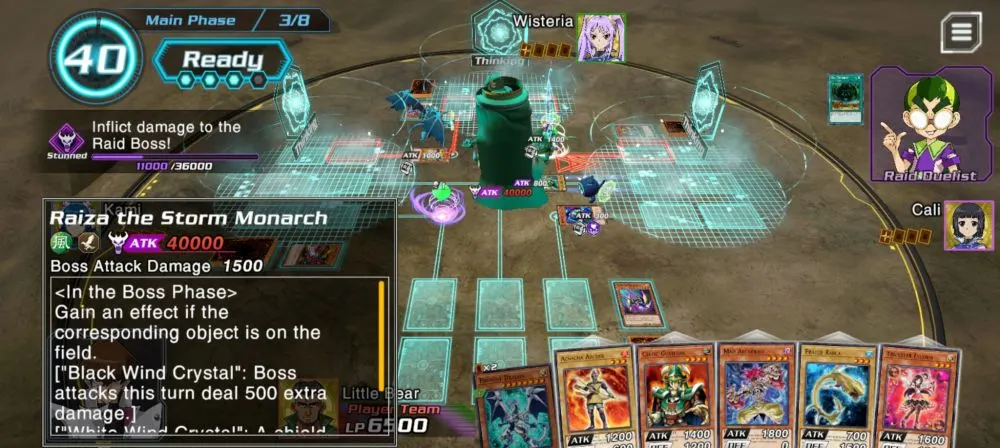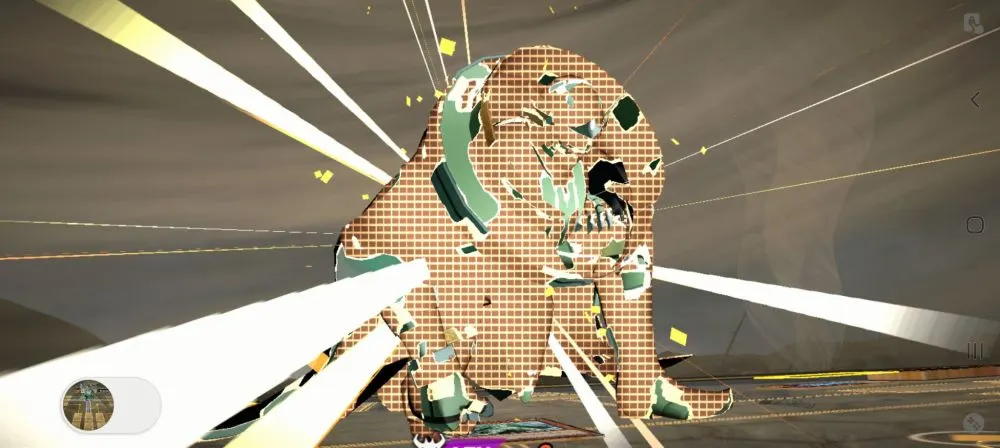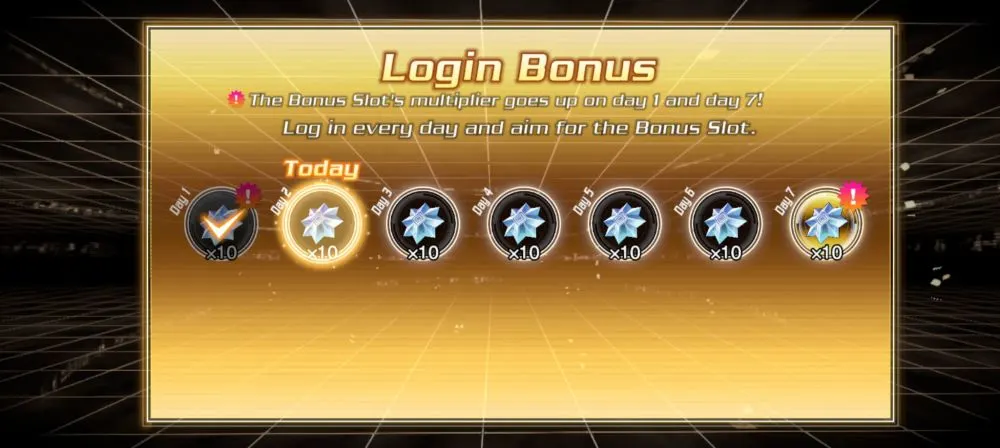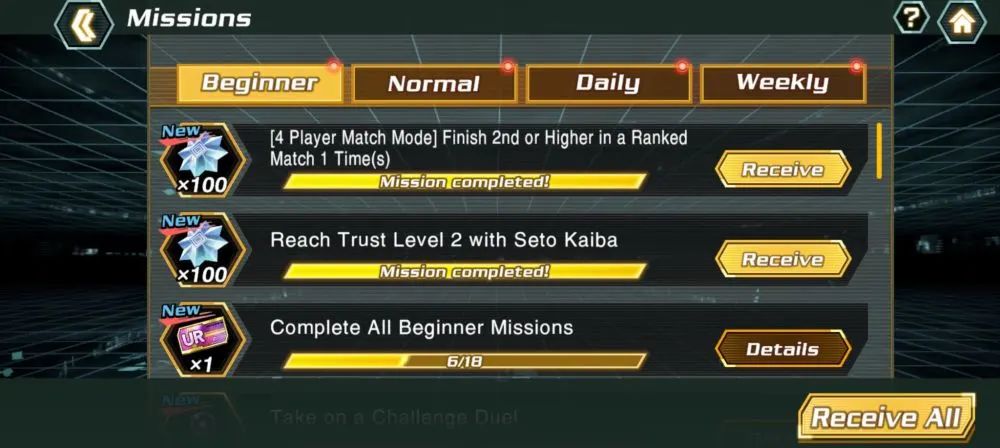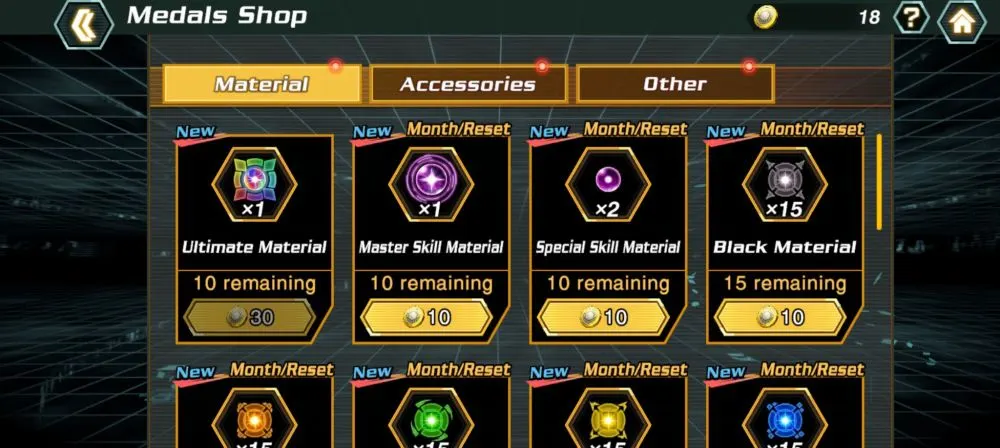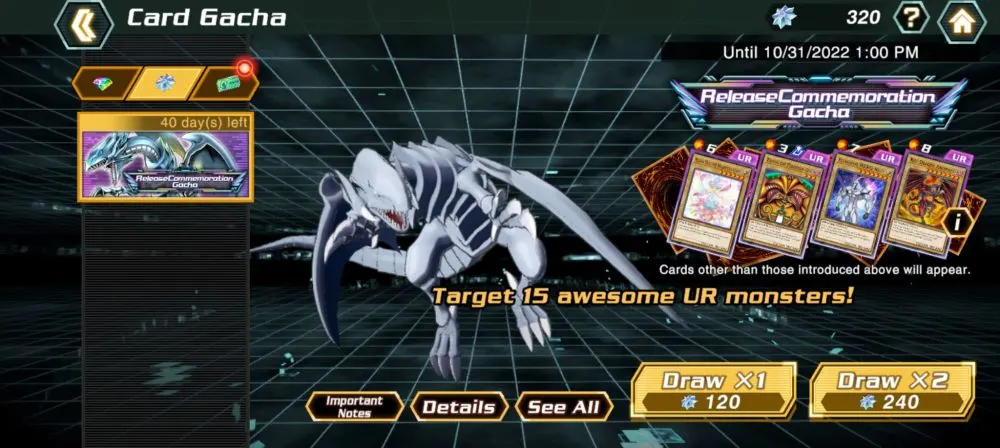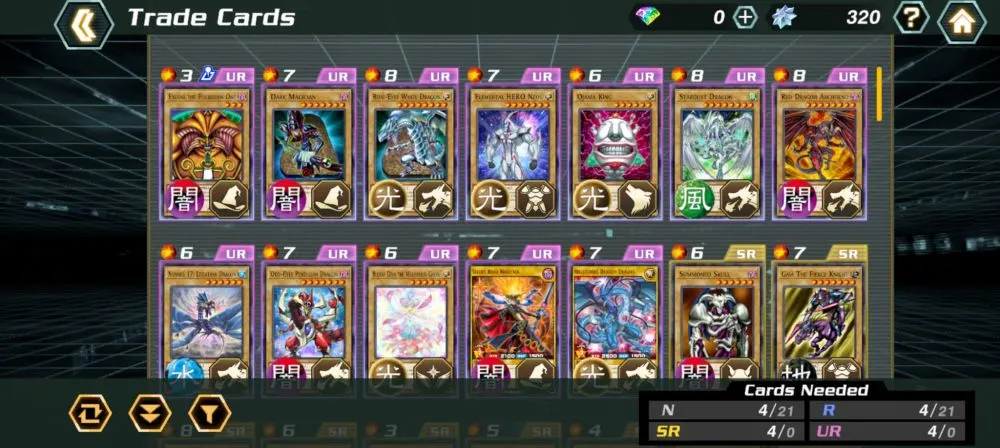First it was regular duels – now called Master Duels – and then card games on motorcycles, then Speed Duels, then Rush Duels, and now this. Konami’s Yu-Gi-Oh! Cross Duel brings new gameplay elements into the tried-and-true formulas of the TCG to create a unique experience.
Yu-Gi-Oh! Cross Duel uses the familiar framework of the current TCG to create a new, 4-player battle experience. In Cross Duels, you’ll need skill, strategy, foresight, and more than a little bit of luck to come out on top in these brawls. Yu-Gi-Oh! Cross Duel is available on both iOS and Android platforms.
As Yu-Gi-Oh! Cross Duel uses a lot of familiar concepts from the base game, veterans of the card game should have no problem figuring out how things work. But for those new to Yu-Gi-Oh in general, this beginner’s guide is for you. Let’s get to it!
What’s New, What’s Left: Cross Duel Basics
Forget (almost) everything you know or knew about Duel Monsters – Cross Duel has its own unique set of rules that sets it apart from any other current Yu-Gi-Oh format. And maybe Konami is testing the waters for this to be an actual format (looking at you, Duel Links).
Game Basics: What’s Old
Let’s start with familiar aspects of the game.
Cross Duels are played with 4 players. Each player has 3 Monster Zones and 3 Spell/Trap Zones (but they’re really just for traps). All players start with 4000 LP. Monsters of levels 5 and 6 require one Tribute to Summon, while those of level 7+ require two Tributes (called “Summon Material” in this game, but old habits die hard). If you hit 0 LP, you lose. And players draw 1 card at the start of the turn, except during turns 7 and 8 – they draw 2 cards on those turns.
Game Basics: Monsters
Here’s where things start to look really different.
Monsters can be Summoned in either Attack or Defense Position, which will use their respective values. And I bet someone’s having a laugh now that we can Summon in Defense Position. You cannot set Monsters face-down. To Summon in Defense, drag the monster to the lower half of the Monster Zone.
All Monsters are Normal Monsters. Tuners? Xyz Materials? Link Rating? Until a card is equipped with a Skill, it’s treated as a Normal Monster, and I’m not ashamed to admit I spent some time reading the otherwise-nonexistent flavor text for cards like Number 39: Utopia or Firewall Dragon. Card Skills are a pretty big thing, and I’ll talk about them at length later.
You can also play as many monsters as you want from your hand as you want, or none at all. As mentioned earlier, you’ll still need to offer 1 Tribute for level 5 and 6 monsters, and 2 Tributes for level 7 or higher monsters.
Game Basics: Turn Flow
Yu-Gi-Oh! Cross Duel has a very, very different turn flow from regular Yu-Gi-Oh.
The first thing you should be aware of is that there is a turn limit. After 8 turns, the LP of all remaining players will be compared, and the player with the most LP comes in first place, with other players taking places based on their LP. Note that in the case of a tie, it will drop players to the next lowest ranking. If one player has 5000 LP, two have 3000, and one has 1500, it’ll be 1st, 3rd, 3rd, and 4th in the rankings.
Now that that’s out of the way, each turn only has 2 phases: the Main Phase and the Battle Phase. During the Main Phase, you can play Monsters or set Traps from your hand, or change the battle position of monsters that are not yet moving, which I’ll discuss in a bit.
Once each player is finished, the game moves on to the Battle Phase. During the Battle Phase, each player can play Spell Cards from their hand to disrupt their opponent’s plays. Once everyone is satisfied or has no more cards to play, movement begins.
Wait, movement?
Game Basics: Combat
See, the 3 Monster Zones in Yu-Gi-Oh! Cross Duel aren’t just for show. Each zone corresponds to a specific lane: the left Monster Zone targets the player on your left, the middle Monster Zone targets the player across you, and the right Monster Zone goes for the player on your right. During the Battle Phase, a monster in Attack Position will move down that lane to either attack your opponent or do battle with an opponent’s monster.
You should note here that each lane actually has two checkpoints: a midpoint and your opponent’s field. A monster will always move as far as its movement will allow it. For most monsters, they’ll be able to move until the next checkpoint, meaning that if both players play a monster on one lane, they will clash in the midpoint and do battle.
Combat resolution is another very different mechanic in Yu-Gi-Oh! Cross Duel. Like regular Yu-Gi-Oh, the outcome of battles is dependent on ATK, DEF, and battle positions. Veterans of the card game will note that this part plays out almost exactly the same; the only difference is that there is no LP damage if a monster in Attack Position is destroyed in battle. For newer players, here’s a quick breakdown:
- Both monsters in Attack Position: The monster with more ATK wins; the loser is sent to its owner’s Graveyard.
- One monster in Defense Position: Compare the attacker’s ATK versus the defender’s DEF. The higher one wins.
Unlike regular Yu-Gi-Oh, your monsters can be worn down in battle. In practical terms, this means that they lose ATK or DEF after combat if they were victorious, depending on how much of that stat the opponent’s monster had.
To illustrate this point more clearly, let’s bring up a scenario. Let’s say I have a Blue-Eyes White Dragon on my field (3000 ATK) fighting an opponent’s Summoned Skull (2500 ATK). At the end of the turn, the monsters will battle, and since Blue-Eyes White Dragon has more ATK than Summoned Skull, it wins the battle. However, because Summoned Skull had 2500 ATK, my Blue-Eyes spent that much ATK beating it, and while I still have Blue-Eyes on the lane, it’s now down to just 500 ATK.
Another rule that veteran players need to watch out for is that failing to destroy a Defense Position monster can destroy your monster. If my 500 ATK Blue-Eyes attacks a Defense Position Giant Soldier of Stone (2000 DEF), it loses, and Giant Soldier of Stone loses 500 DEF (since it spent that amount of DEF fending off my dragon). Defense Position monsters also prevent your opponent’s monster from attacking directly, even if they lose combat, allowing you to mass summon them as a wall.
As the center lane can have 4 monsters squaring off, combat in the center tile first has the monsters facing each other do combat, then the winners attack each other. While it may be counterintuitive to send monsters down the middle lane, the center of the board also holds a very powerful Spell Card at the start of the game – and the first player to take the middle claims that card.
One last thing to note is the game’s LP system. As I mentioned earlier, there is no LP damage resulting from the combat of two Attack Position monsters – a monster must attack a player directly by reaching their play zone and if the defender fails to put up a monster in that lane’s zone.
Finally, damaging an opponent also heals you for the same amount of LP, though this amount can never exceed 8000. As a Cross Duel’s results are determined by how much LP you have at the end of the 8 rounds, it can be a strategic decision to snipe at all your enemies and take advantage of weak points in someone’s defenses to boost your own score!
This combat system, coupled with the game’s movement, challenges players to think tactically. Wait and see everyone’s moves, or launch an all-out offensive and leave yourself vulnerable? Sacrifice a monster at the midpoint to bring out a big monster, or bait your opponent?
Game Basics: Your Ace Card
Each deck must also have an Ace Monster, which is usually a prominent card from the Yu-Gi-Oh anime.
Your Ace Monster is special in that it is always added to your starting hand. Each Ace Monster is also an Ultra Rare, meaning they have access to powerful and unique skills – but more on that later. While you can slot your own Ultra Rares from packs as Ace Monsters, you’ll be given a free choice of Ace Monster from several choices after completing the tutorial.
Note that once you can build your own deck, you can select your own Ace Monster.
Game Basics: Monster Skills
Further compounding this is the addition of Monster Skills. By default, every monster is a Normal Monster, but this changes once you slap a new skill on to that monster!
The skill system allows you to create monsters on-demand to fill in gaps in your deck. Need something that counts as 2 Tributes? We got a skill like that. A monster that buffs all your other monsters? Done. A monster that returns to your hand when destroyed? A tall order, but it’s possible. Skills can also change a monster’s type, converting it into a Fusion, Synchro, Xyz, or Link Monster which allows it to synergize with some other skills.
However, this isn’t free. You need to both unlock and equip skills to cards to turn them into Effect Monsters. It’s also very important to note that in regular 4-way ranked matches, each monster can only have 1 skill. The exception to this is your Ace Monster, which can have 3 skills. That’s why it’s called an ace.
Another thing you should be wary of is that SR and UR monsters (Super and Ultra Rare) have a Special Skill at roughly the 3rd tier of skills. These are very powerful unique skills that can vastly change how the card works, so be sure to have a look at your collected SRs and URs. In addition, UR monsters also have a Master Skill, which is a superior version of their Special Skill that’s unlocked at the very end of the skill tree. These Master Skills are exclusive to these monsters and have huge, game changing effects.
To unlock skills, go to Cards from the main menu, then Monster Customization. This will bring you to the skill trees. To open the skill tree, tap the card you want to customize. You’ll then be brought to that card’s skill tree, where you can unlock skills by paying in Skill Materials. The higher the tier of the skill you want, the more expensive it gets, so choose wisely. If you ever need more Skill Materials, look to your quests, the shops, and post-duel rewards.
It’s also worth noting that Skill Trees are saved per card. Thus, it may be more economical to focus on a few cards that you like rather than trying to buy skills for every single monster you own.
Once you’re happy with your skills, make sure to equip the skills you bought in the Deck screen, via Cards -> Edit Deck. Tap on the card you want to equip skills, then drag the skill you want into one of the slots. It pays to remember which cards you bought skills for – write them down, if you need to – so that you don’t run into battle without your new cards!
Game Basics: Spell and Traps
Unlike regular Yu-Gi-Oh, Spells and Traps are super simple.
Spell cards can only be played during the Battle Phase. All Spell Cards are one-off effects that don’t stay on the field. You’re also given free reign over targeting, meaning you can affect your opponent’s monstesr as well as your own with your targeted spell cards.
Traps, on the other hand, are set during your Main Phase. You have 3 slots for Trap Cards on your field. Traps automatically trigger when their conditions are met, and this is not optional. A Trap Card’s activation trigger can be seen in <brackets like this> in its card description. Some Trap Cards must also be placed in one of the lane midpoints, where they’ll stay until sprung.
Game Basics: Deck Construction
Deck construction in Yu-Gi-Oh: Cross Duel is very simple, and follows some basic rules.
First off, you must have an Ace Monster. If you’re starting a new deck, you can select which of your monsters you’d like to designate as an Ace – it doesn’t have to be one of the URs you get at the start of the game.
Each deck also consists of 20 cards – no more and no less. Finally, you can only have 1 copy of each card in your deck. That’s all there is to it, but remember that deck building is more of an art than an exact science. Experiment with different deck compositions, new monster skills, Spells and Traps, and most importantly: play your deck in actual combat to see how it performs and what its weaknesses are.
Other Game Modes
If you’ve read through the entire section above, congratulations: you now know all the basics of Yu-Gi-Oh! Cross Duel. Once you’ve mastered the basic rules, we can talk about the other game modes the game has to offer.
Tag Duels
Tag Duels are a PVE mode where you square off with an AI partner against a team of 2 AIs.
Tag Duels use the same base rules, with some exceptions. For starters, LP is now divided into two teams, with both partners sharing their 4000 LP total. Damage to one damages both partners, and healing one heals you both. This also means that you can’t attack your tag partner. Instead, if your monster reaches your partner’s Monster Zone, it instead heals them (and you!) for 500 LP.
Other than this, the same rules apply: there’s an 8-turn limit to end with more LP than the opposing team, and if you can do that, you win. Tag Duels will sometimes require some altruistic play. Remember: you stand and fall together, so if your partner is in a tough spot, be sure to help them out.
Of special note is that you select which deck your tag partner uses, and they will always use a copy of one of your own decks. It’s up to you whether you want to play with 2 copies of your deck, or if you’d like them to take a more supportive role. Keep in mind that they’re AI, so they’re not the sharpest tools in the shed!
Note that you can switch your tag partner, if you’ve unlocked more potential partners. You can get more partners by just playing through tag duels. Each partner also has a Trust Level, which increases as you stick with them in Tag Duels. As their Trust Level increases, you’ll gain various rewards such as Gems and Skill Materials.
Raid Duels
Raid Duels are my personal favorite mode. In this duel, all 4 players work together to take down a massive raid boss. Cooperation and coordination are key in these battles, as raid bosses are extremely tough. And just like any other video game, time is not on your side – if you fail to defeat the raid boss by the 9th turn, you lose!
Raid Duels take the team play aspects of Tag Duels and apply them across the board. Any time a player’s monster reaches another player’s Monster Zone, they’re healed for 500 LP, regardless of the sent monster’s ATK or DEF. It’s also important to note that LP are shared among all players, and in this mode, players start with 8000 total LP.
Raid Duels follow the same format as regular Cross Duels, with one exception: there’s a special Boss Phase that happens before the Main Phase. During this time, the raid boss will use its abilities and attack players directly, if it can. Don’t worry about its massive ATK score though: the damage that a raid boss does can be seen by tapping its card. In the same screen, you can also read up on the abilities that the raid boss will use.
It’s also during the Boss Phase that the Raid Duelist, an AI player who controls the boss, will play cards. This Duelist uses different rules: they play monsters from the middle of the board down any lane, and if they elect to play a Spell Card, you can view that Spell Card before it takes effect by tapping it beside the Raid Duelist.
Raid bosses aren’t alone: they can summon objects, shields, and even minions to assist them in combat. Objects are special obstacles that appear in side lanes. Unlike regular monsters, objects have HP instead of ATK or DEF, and each time they’re hit, they lose 1 HP. You’ll need to destroy objects before their effects can trigger, unless you want to have a miserable time dealing with boss abilities.
Shields operate in much the same way as objects, except they appear around the boss and can tank a number of hits as they, too, operate on HP rather than ATK or DEF. Notably, if your monster breaks a shield, it will continue to attack the raid boss, but if they fail to break it, they are destroyed.
With all that said, not all is grim. All raid bosses possess a weak point (typically their backs) where they receive double damage. Several skills can also make dealing with a boss faster, especially the Anti-Boss buff which doubles damage inflicted to a boss.
Finally, each boss has a special condition that will cause it to be stunned if it’s fulfilled, which you can see to the left side. If a boss is stunned, not only does it lose all summons, objects, and shields, but it also forfeits its next turn and has all of its side count as weak spots. Fight bravely and wisely, and victory may yet be yours.
Defeating a raid boss nets you points for that boss’ season, which can be used to gain rewards such as gems and Skill Materials. If you’d like to practice on a raid boss to learn its patterns and abilities, you can practice with bots in Practice Mode.
Getting Cards And Rewards
Yu-Gi-Oh! Cross Duel has a fair amount of rewards up for grabs, and here’s a quick breakdown on where to get them. As a general rule of thumb, if there’s a red dot on a button in the main menu, tap it.
Login bonuses are always a thing, and you’ll get your login bonus the first time you log in in a day in Yu-Gi-Oh! Cross Duel.
Missions can be accessed via the 4th button on the left of the main menu screen – the one with the three lines. These missions are split into beginner, normal, daily, and weekly missions. Each of these missions will give you valuable resources that you’ll need to further your Duelist career, whether that’s via Gems or Skill Materials.
Finally, you can buy more resources directly at the shop by spending Medals, which you get by scrapping extra cards (read: any more than one copy). To convert cards to Medals, go to Cards -> Vault from the main menu. Be sure to check the shop often and buy out its stock before the month rolls over!
Getting More Cards
Getting more cards is simple, too: just buy booster packs via the Card Gacha menu on the main screen.
You can use three different currencies to buy boosters: paid Crystals (the rainbow ones), Gems, and Tickets. Tap on the icons to the left side of the screen to switch between currencies. Unfortunately, most boosters can only be bought via paid Crystals. While there will undoubtedly always be something to spend Gems on (right? RIGHT?), the game is still in its infancy and I can’t say where it will go from here.
You can also trade away extras you don’t need via Shop -> Trade Cards. Note that there is an exchange ratio, namely 4 cards of one rarity to obtain another one of that same rarity.
It’s Time To Cross Duel!
Yu-Gi-Oh! Cross Duel is a very different take on the standard Yu-Gi-Oh format, and I’m sort of excited to see how far Konami is going to take this version of the game. It undoubtedly has its flaws, but with time and a careful hand, I’d like to see how Cross Duel will end up in the future.
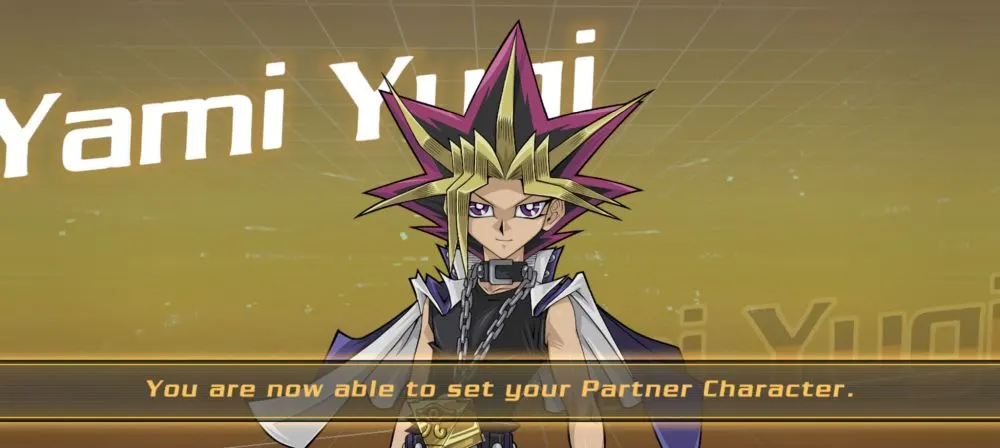
That concludes my beginner’s guide to Yu-Gi-Oh! Cross Duel and I hope you were able to pick something up. If you have anything to add, or if I missed anything, let me know in the comments!

